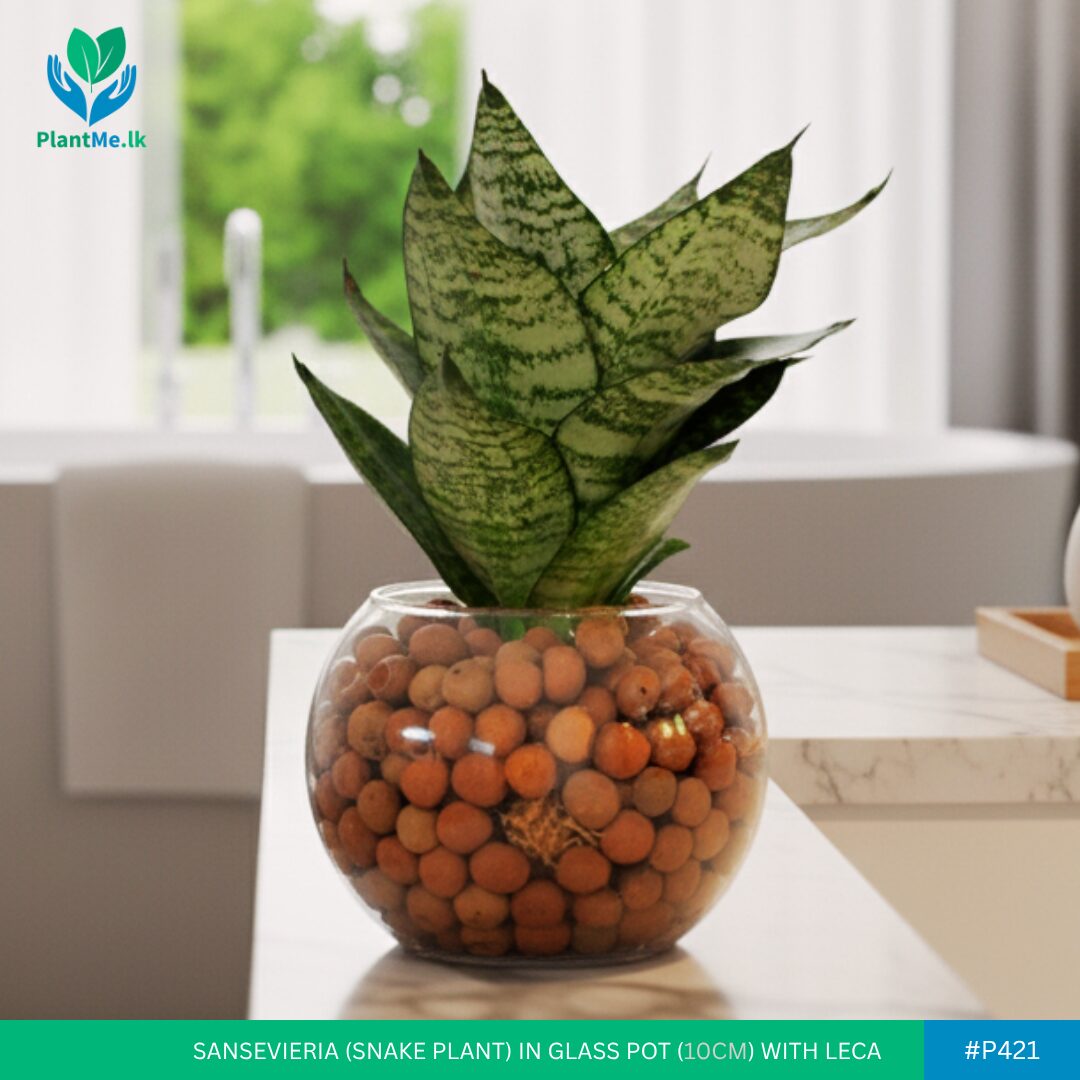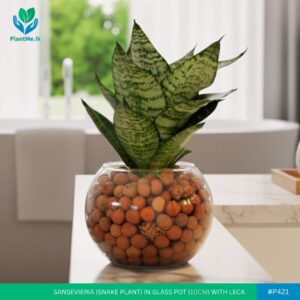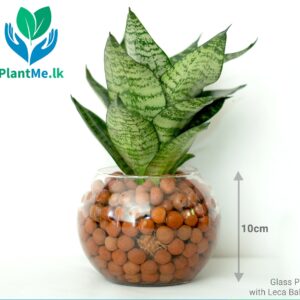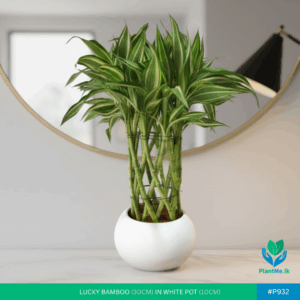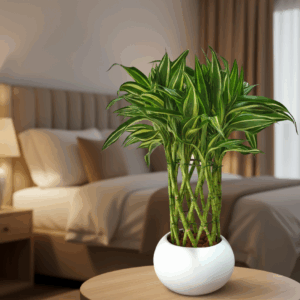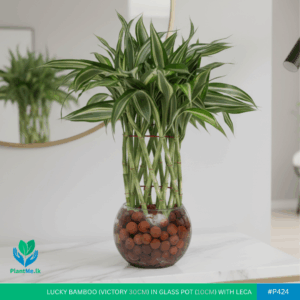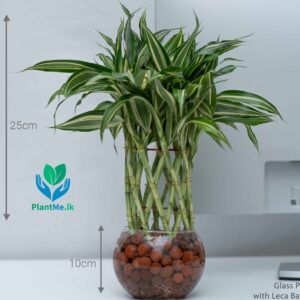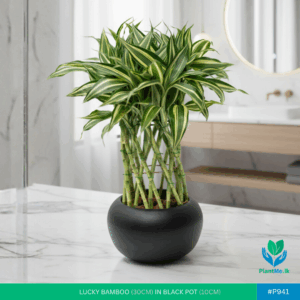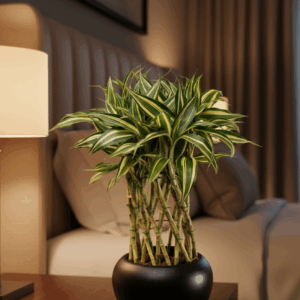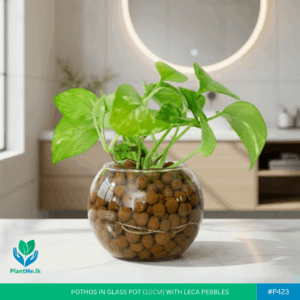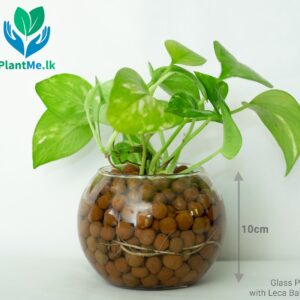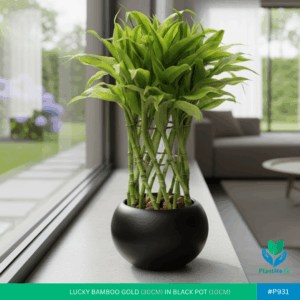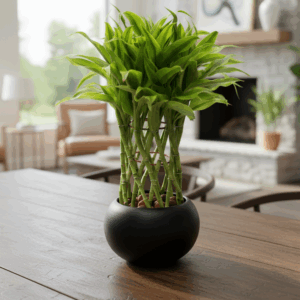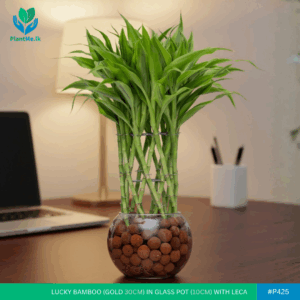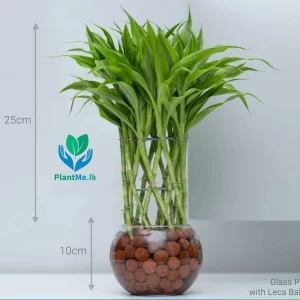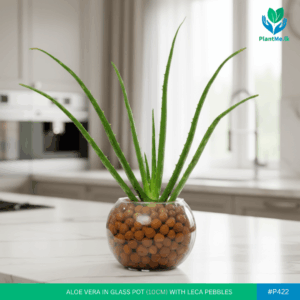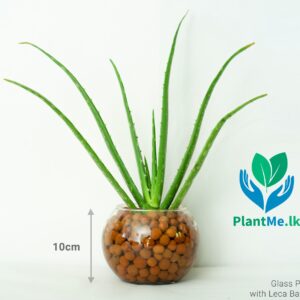Sansevieria in Glass Pot with LECA Balls | #P-421 (Snake Plant)
Rs. 3,100.00 Original price was: Rs. 3,100.00.Rs. 2,500.00Current price is: Rs. 2,500.00.
𝗣𝗿𝗲𝗺𝗶𝘂𝗺 𝗜𝗻𝗱𝗼𝗼𝗿 𝗣𝗹𝗮𝗻𝘁𝘀 for Your Home & Office!🌵☘️
Sansevieria (Snake Plant) in Glass Pot with LECA Balls
Glass Pot Diameter : 10cm
⭐️The LECA materials allow it to absorb water directly to the roots without suffocating them
⭐️ Modern indoor plants
⭐️ Attractive geometric designs
⭐️ Unique deco that fits anywhere
⭐️ Versatile options for table, wall & floor
📝Sizes and Colors of plants might be different than these pictures as all of these are growing natural plants
Is Sansevieria Plant Really Producing Oxygen? and more interesting facts about Snake Plant
Sansevieria, also known as snake plant or oxygen plant, is a popular and hardy succulent that is commonly grown indoors. This plant is native to West Africa and is known for its tall, sturdy leaves that grow vertically from a central point, giving it a distinctive snake-like appearance. Sansevieria plants are very easy to care for and are well-suited to a wide range of environments, making them a great choice for those who are new to indoor gardening.
One of the most unique and interesting things about Sansevieria plants is their ability to produce oxygen. Unlike most plants, which produce oxygen during the day and consume it at night, Sansevieria plants produce oxygen 24 hours a day. This makes them an excellent choice for bedrooms, offices, and other spaces where people spend a lot of time, as they can help to improve air quality and reduce the levels of carbon dioxide in the air.
In addition to their ability to produce oxygen, Sansevieria plants are also known for their ability to remove toxins from the air. According to NASA’s Clean Air Study, Sansevieria plants are effective at removing a wide range of harmful chemicals from the air, including benzene, formaldehyde, and trichloroethylene. This makes them an excellent choice for people who live in urban environments or who are exposed to air pollution on a regular basis.
When it comes to caring for Sansevieria plants, there are a few key things to keep in mind. First, it is important to provide your plant with the right amount of light. Sansevieria plants prefer bright, indirect light, so a spot near a window that gets plenty of natural light is ideal. However, they can also tolerate low light conditions, so they are a good choice for rooms that don’t get a lot of natural light.
In terms of watering, Sansevieria plants are very drought-tolerant and only need to be watered once every week or two. Overwatering can lead to root rot and other problems, so it is important to allow the soil to dry out between waterings. A good rule of thumb is to water your plant when the top inch or so of soil is dry to the touch.
In terms of feeding, Sansevieria plants do not need to be fertilized very often. In fact, over-fertilizing can lead to the plant’s leaves turning yellow and becoming limp. If you do choose to fertilize your plant, a well-balanced, water-soluble fertilizer that is specifically formulated for succulents is the best choice. You can apply the fertilizer according to the instructions on the label, or you can dilute it and apply it every few months.
One of the great things about Sansevieria plants is that they are very low maintenance and easy to care for. As long as you provide them with the right amount of light, water, and nutrients, they will thrive. Sansevieria plants are also very resilient and can tolerate a wide range of environmental conditions, so they are a great choice for beginners or for those who don’t have a lot of experience with indoor gardening.
In conclusion, Sansevieria plants are a popular and hardy succulent that is well-suited to a wide range of environments. In addition to their attractive appearance, these plants are known for their ability to produce oxygen and remove toxins from the air, making them an excellent choice for improving air quality in your home or office. With their low maintenance requirements and resilience, Sansevieria plants are an easy and rewarding choice for any indoor gardener.

